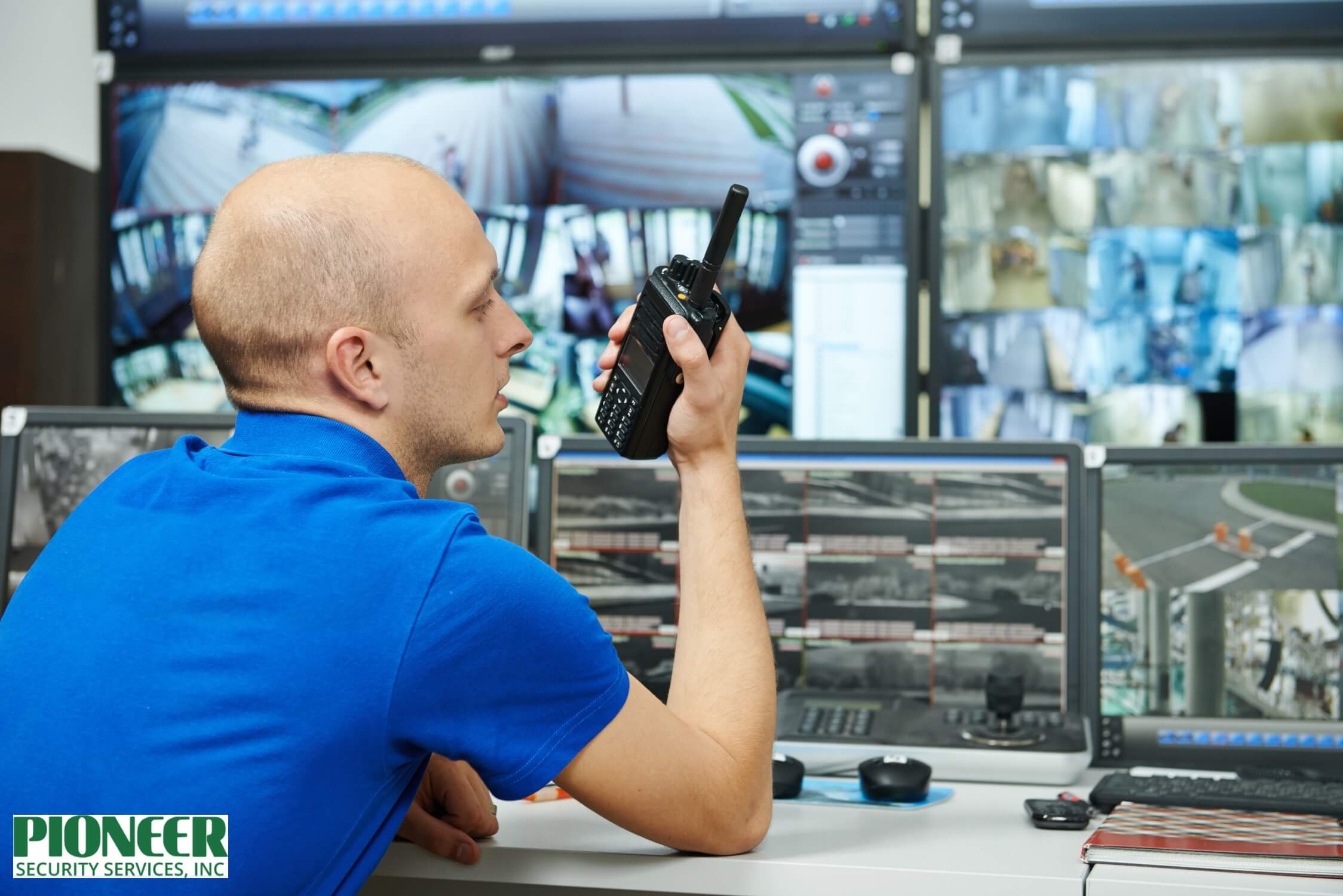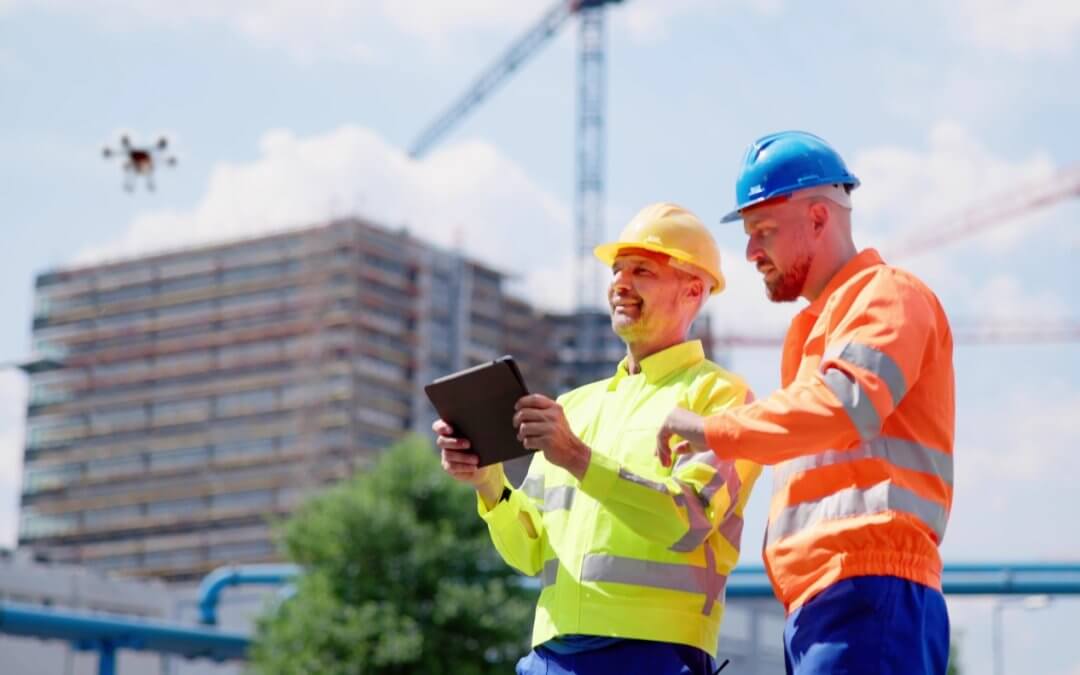A Cornell University review found that areas with active video surveillance experienced up to a 51% drop in parking lot crime and a 23% decrease in public transportation crime, highlighting the strong deterrent power of monitored camera systems.
By combining advanced cameras with professional oversight and immediate two-way voice intervention, this solution helps prevent losses, speeds up response, and brings a new level of peace of mind to remote site managers, all while keeping costs practical.
In this article, you’ll discover why live video monitoring stands out as a wise choice for remote sites, along with how it works and what to consider for your property.
The Security Challenges of Remote Sites
Safeguarding remote properties is no small feat. These locations come with a unique set of vulnerabilities that make them difficult to protect using standard security measures. Whether it’s an active construction site, a utility installation, or a temporary storage yard, being “out of sight” often means increased risk and a greater need for advanced protection.
Research on emergency services in the U.S. shows response times in rural areas are significantly longer. An American College of Surgeons analysis found rural EMS calls can take 20 minutes longer than the national average, so proactive detection and verification are critical for remote areas.
Expansive Areas with Limited Oversight
Unlike traditional businesses, remote sites often span large open spaces, from wide job sites to sprawling fields or storage yards. Staff aren’t typically onsite around the clock, and patrols can only cover a limited area. This results in long stretches with no one watching, particularly during evenings, weekends, or holidays. Without constant oversight, unauthorized visitors can easily find entry points, often going undetected until a problem is discovered after the fact.
High-Value Targets Left Exposed
Heavy machinery, tools, copper wiring, fuel tanks, and other valuable assets are regularly left in plain sight out of necessity. Thieves and vandals know that these items are both tempting and accessible, and that law enforcement may need extra time to respond in remote areas. Even minor incidents, such as tampering with equipment, graffiti, or theft of small parts, can disrupt operations, lead to costly delays, and sometimes require expensive repairs or replacements.
This is backed by long-running analyses estimating annual U.S. construction-equipment theft losses of $300 million to $1 billion, with low recovery rates. Recent reporting also documents organized theft of copper amid price spikes, further elevating risks on job sites and in transit.
Pressure to Meet Compliance and Insurance Requirements
Today’s property managers face more than just the threat of loss. Insurers and regulators increasingly require proof that effective, proactive security measures are in place. This might involve providing detailed incident records, demonstrating real-time monitoring, or regularly updating safety protocols.
Failure to meet these expectations can result in higher insurance premiums, restricted coverage, or regulatory penalties, making reliable documentation and continuous oversight more critical than ever.
What kinds of incidents are most common at remote sites?
Most incidents involve theft of equipment or materials, unauthorized access, vandalism, and sometimes environmental hazards like water leaks or unsafe machinery left running. Effective monitoring can catch these issues early and help prevent further loss or damage.
Where Live Video Monitoring Makes a Real Difference
Remote security challenges aren’t one-size-fits-all. Let’s examine how live video monitoring provides practical protection across various industries and environments.
Federal technical guidance underscores that modern video security systems support real-time assessment, recording, analytics, and remote monitoring, capabilities that live monitoring puts to work across complex outdoor sites.
Securing Construction Sites from Start to Finish
Building projects are magnets for thieves looking to grab valuable tools or copper wire. With live monitoring, you’ll have constant eyes on your equipment and materials, day and night. Real-time alerts enable you to respond quickly to suspicious activity, and every incident is documented to facilitate insurance claims and compliance.
Protecting Utilities and Energy Facilities
From substations to solar farms, these sites need reliable, wide-area coverage. Video monitoring enables operators to remotely oversee critical infrastructure and respond to intrusions or hazards in real-time. Keeping these facilities safe is about more than property; it’s about ensuring uninterrupted service and meeting industry regulations.
Watching Over Storage Yards and Logistics Centers
Fleet parking, loading docks, and outdoor storage areas present unique visibility challenges. With cameras positioned at key access points and perimeters, live monitoring helps prevent unauthorized entry and ensures your assets stay secure. A single incident caught early can mean avoiding thousands of dollars in losses.
Is live video monitoring helpful for short-term projects or pop-up locations?
Yes, live video monitoring is a flexible solution that works just as well for temporary sites as it does for permanent locations. Mobile camera units and rapid setup options make it easy to protect your property, no matter how long you need coverage.
What Sets Effective Live Video Monitoring Apart
Not all video monitoring solutions deliver the same results. For remote sites requiring more than a basic security presence, understanding the key factors that make a monitoring system genuinely effective can make all the difference in protecting your property and your peace of mind.
Human Insight Enhances Every Alert
While cameras and technology form the backbone of any monitoring system, the real advantage comes from having experienced professionals actively watching your feeds. Human operators do more than just observe; they interpret activity in real time, distinguish between genuine threats and everyday site activity, and respond with live audio warnings when it matters most. This immediate, hands-on intervention discourages intruders before losses occur, turning passive surveillance into a proactive defense.
Adaptable Solutions for Evolving Sites
Remote properties are constantly changing. One week, you might need to monitor a material drop-off, the next, a new access road or work zone. Effective live video monitoring is designed to adapt seamlessly to your operations.
Look for systems that offer portable cameras, wireless installation options, and customizable detection zones. This flexibility means your security coverage evolves as your site grows, shifts, or faces new challenges, always keeping your most valuable assets in view.
Swift Response and Clear Communication
A core strength of live video monitoring is its ability to deliver rapid, coordinated action when incidents arise. The best providers don’t just sound an alarm—they immediately contact on-site managers or local responders, supplying detailed, verified information. This speeds up the response time and helps authorities act with confidence. Reliable reporting is also crucial: expect regular system health checks, easy access to incident footage, and clear updates that keep you fully informed. With transparent communication, you’ll always know what’s happening on your site, whether you’re on location or miles away.
How does live video monitoring integrate with other security systems?
Many solutions can connect with existing alarm panels, access control, and lighting systems. This creates a coordinated approach, allowing video, alarms, and alerts to work together for faster detection and better protection.

Getting Started: What to Consider for Your Remote Site
Before setting up live video monitoring, it’s smart to plan ahead and make sure your system is tailored to your property’s specific needs. Here’s what every site manager should keep in mind when moving toward smarter security.
Assessing Your Property’s Risks and Priorities
Start by walking your site to identify the areas that need the most attention. High-value equipment, storage zones, entryways, and blind spots should all be mapped out. Make note of any recent incidents or ongoing concerns, and prioritize the places where losses or disruptions would hurt the most.
Planning Camera Placement and Connectivity
Effective monitoring relies on strategic camera locations. Think about lines of sight, lighting conditions, and how your property is used throughout the day. For truly remote sites, you may need solutions that use wireless connections or solar power to keep everything running smoothly, no matter the conditions.
Aligning Response Procedures with Your Team
Decide in advance who should be notified if an incident occurs and how you want events handled. Establish clear communication protocols for after-hours alerts, escalation steps, and incident reporting. This preparation ensures a quick, coordinated response when it counts.
What happens if my site’s layout changes or I add new equipment?
Most live video monitoring systems are designed to be flexible and scalable. You can easily reposition cameras, update coverage zones, and adjust alert settings to reflect any changes on your property, ensuring continued protection as your needs evolve.
Take the Next Step Toward Smarter Site Security
Remote properties deserve more than a one-size-fits-all approach to protection. Live video monitoring combines advanced technology with real human expertise, giving you confidence that your assets are safe, day and night.
If you’re ready to see how this solution can fit your specific needs, Pioneer Security Services is here to help. Reach out today for a personalized assessment, see our technology in action, and discover the peace of mind that comes with real-time protection for your remote site.
Frequently Asked Questions
Can live video monitoring continue working if there’s a power outage or network interruption?
Most modern systems include battery backups or solar power options to keep cameras running if there’s a power loss. Additionally, many solutions use cellular or dual-path connectivity, so monitoring continues even if the primary network goes down.
What kind of training do monitoring operators receive?
Operators typically go through extensive training on threat identification, incident protocols, and communication skills. This ensures they respond quickly and appropriately to any situation, providing a real human touch behind every camera.
Is video footage stored, and for how long can I access recordings?
Recorded footage is usually stored securely in the cloud for a set period, often ranging from 30 to 90 days. This gives you plenty of time to review incidents, download clips, or share evidence if needed.
Can the system handle remote sites with no traditional power or internet access?
Absolutely. Many providers offer mobile surveillance units powered by solar energy and equipped with cellular connectivity, making it possible to protect even the most isolated locations.
Are there privacy protections for workers and visitors on my site?
Yes, responsible monitoring programs follow strict privacy guidelines. Cameras can be set up to avoid private or non-essential areas, and access to live feeds or recordings is limited to authorized personnel only.



